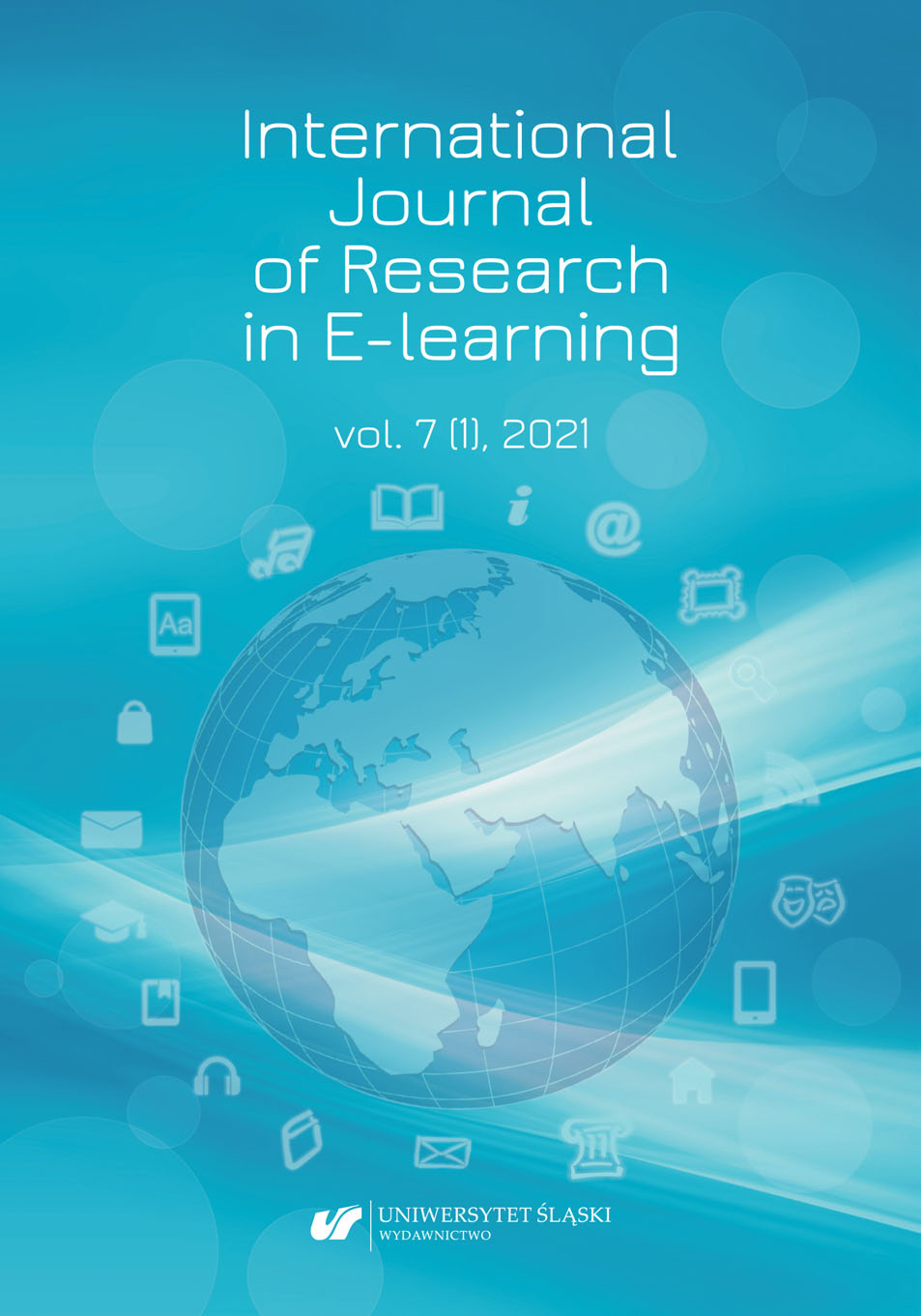Allen, I. E., & Seaman, J. (2011). Going the Distance: Online Education in the U.S. Babson Survey Research Group and Quahog Research Group.
Google Scholar
Blended learning: essence and advantages in the modern world. (2019, May 24). Retrieved from EdEra: http://blog.ed-era.com/blended-learning-sut-pierievaghi-ta-uspishni-prikladi
Google Scholar
Buhaichuk, K. L. (2016). Blended learning: Theoretical Analysis and Strategy of Implementation in Educational Process of Higher Educational Institutions. Information Technologies and Learning Tools, 54(4), 1–18. doi: https://doi.org/10.33407/itlt.v54i4.1434
Google Scholar
Clayton Christensen Institute for Disruptive Innovation. Blended Learning. (n.d.). Retrieved from Clayton Christensen Institute for Disruptive Innovation: http://www.christenseninstitute.org/key-concepts/blended-learning
Google Scholar
Digital 2020: Ukraine – DataReportal – Global Digital Insights. (2020, February 18). Retrieved from DataReportal: https://datareportal.com/reports/digital-2020-ukraine
Google Scholar
Economic Strategy of Ukraine 2030. Ukrainian Institute of the Future. (n.d.). Retrieved from Ukrainian Institute of the Future: https://strategy.uifuture.org/index.html
Google Scholar
Education: From disruption to recovery. UNESCO. (2020). Retrieved from UNESCO: https://en.unesco.org/covid19/educationresponse
Google Scholar
Hrynevych, L. (2020, April 28). Education after the pandemic. Part 2. Trends in the future of school education. NUS. Retrieved from NUS: https://nus.org.ua/view/osvita-pislya-pandemiyichastyna-2-trendy-majbutnogo-shkilnoyi-osvity
Google Scholar
Huawei Predicts 10 Megatrends for 2025. (n.d.). Retrieved from Huawei: https://www.huawei.com/en/news/2019/8/huawei-predicts-10-megatrends-2025
Google Scholar
Kemp, S. (2020). «Digital 2020 Ukraine». Hootsuite & We Are Social, retrieved from DataReportal: HYPERLINK “https://datareportal.com/reports/digital-2020-ukraine” https://datareportal.com/reports/digital-2020-ukraine
Google Scholar
Kuzminska, O., Mazorchuk, M., Morze, N., & Kobylin, O. (2019). 15th International Conference on ICT in Education, Research and Industrial Applications. Integration, Harmonization and Knowledge Transfer (ICTERI 2019). Attitude to the digital learning environment in Ukrainian Universities. Vol. 2393 (pp. 53–67). Kherson: CEUR Workshop Proceedings. Retrieved from http://ceur-ws.org/Vol-2393/paper_245.pdf
Google Scholar
Kuzminska, O., Mazorchuk, M., Morze, N., & Kobylin, O. (2020). Communications in Computer and Information Science. Digital Learning Environment of Ukrainian Universities: The Main Components to Influence the Competence of Students and Teachers, 210–230. 1175 CCIS.
Google Scholar
Morze, N. V., Kucherovska, V. O., & Smyrnova-Trybulska, E. N. (2020). Self-Estimation of an Educational Institution’s Digitalization Level Under the Conditions of Secondary Education Transformation. Open educational e-environment of modern University 8, 72–87. doi:https://doi.org/10.28925/2414-0325.2020.8.8
Google Scholar
Morze, N. V., Smyrnova-Trybulska, E. N., & Glazunova, O. G. (2017). Design of a university learning environment for SMART education. In Smart Technology Applications in Business Environments (pp. 221–248).
Google Scholar
Morze, N. V., Vember, V. P., & Hladun, M. A. (2019). 3d mapping of digital competency in ukrainian education system. Information Technologies and Learning Tools, 70(2), 28–42. doi: https://doi.org/10.33407/itlt.v70i2.2994
Google Scholar
NMC Horizon Report Preview. (2018). Retrieved from Educause: https://bluesyemre.files.wordpress.com/2018/08/previewhr2018.pdf
Google Scholar
Project «Digital agenda of Ukraine 2020». (2016, December). Retrieved from https://ucci.org.ua/uploads/files/58e78ee3c3922.pdf
Google Scholar
Rashevska, N. V. (2010). Blended learning as a psychological and pedagogical problem. Bulletin of Cherkasy University. «Pedagogical sciences». 191, 89–96.
Google Scholar
Sánchez Begines, J., Escalona, M., Strutynska, O., Umryk, M., Wojdynsky, T., & Dominguez-Mayo, F. (2017). Information Systems Development: Advances in Methods, Tools and Management (ISD2017 Proceedings). The Importance of User in ISD. Do We Really Teach? Larnaca (Cyprus): University of Central Lancashire Cyprus. Retrieved from http://aisel.aisnet.org/isd2014/proceedings2017/Education/5
Google Scholar
Strutynska, O., & Umryk, M. (2018). Analysis of Development Level of the Digital Competences of the Ukrainian Educators. In E. Smyrnova-Trybulska (Ed.), E-learning and Smart Learning Environment for the Preparation of New Generation Specialists (Vol. 10, pp. 615–639). Katowice–Cieszyn (Poland): Studio Noa for University of Silesia. Retrieved from http://weinoe.old.us.edu.pl/sites/weinoe.us.edu.pl/files/media/10-615.pdf
Google Scholar
Strutynska, O., Torbin, G., Umryk, M., & Vernydub, R. (2020). 8th Workshop on Cloud Technologies in Education (CTE 2020). Digitalization of the educational process for the training of the future teachers. Kryvyi Rih (Ukraine).
Google Scholar


 https://doi.org/10.31261/IJREL.2021.7.1.02
https://doi.org/10.31261/IJREL.2021.7.1.02
